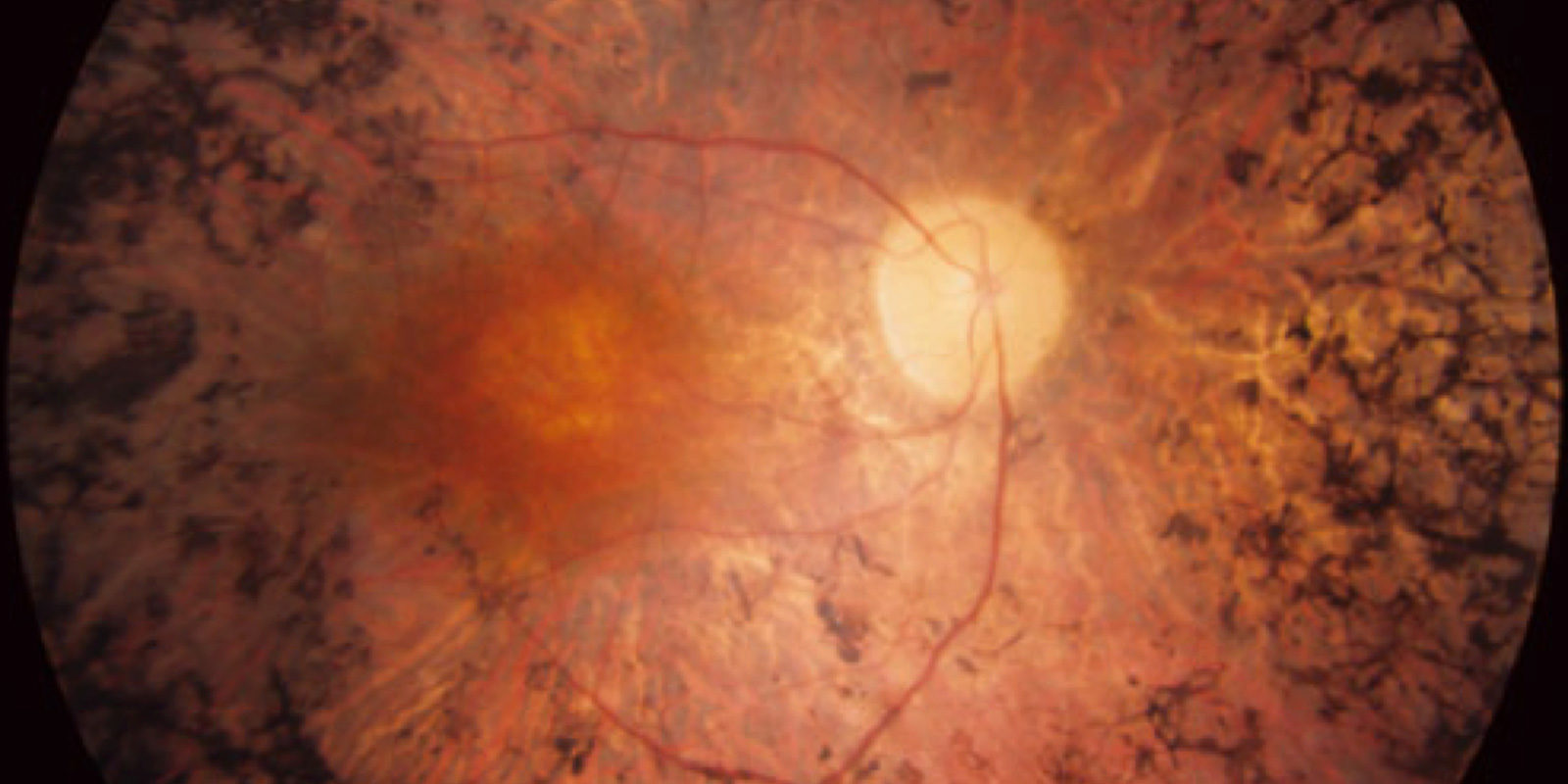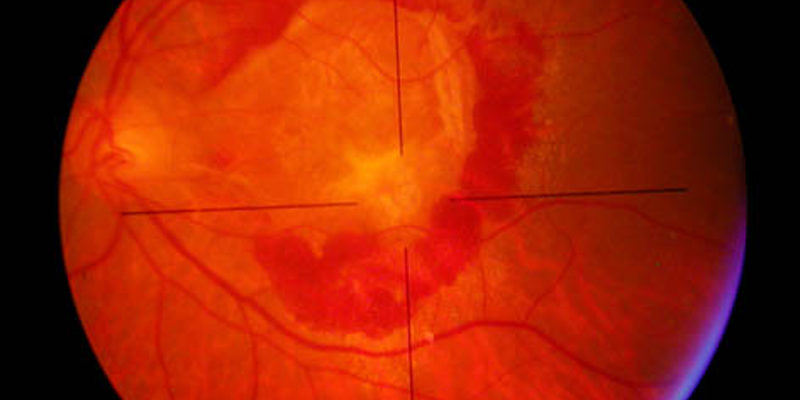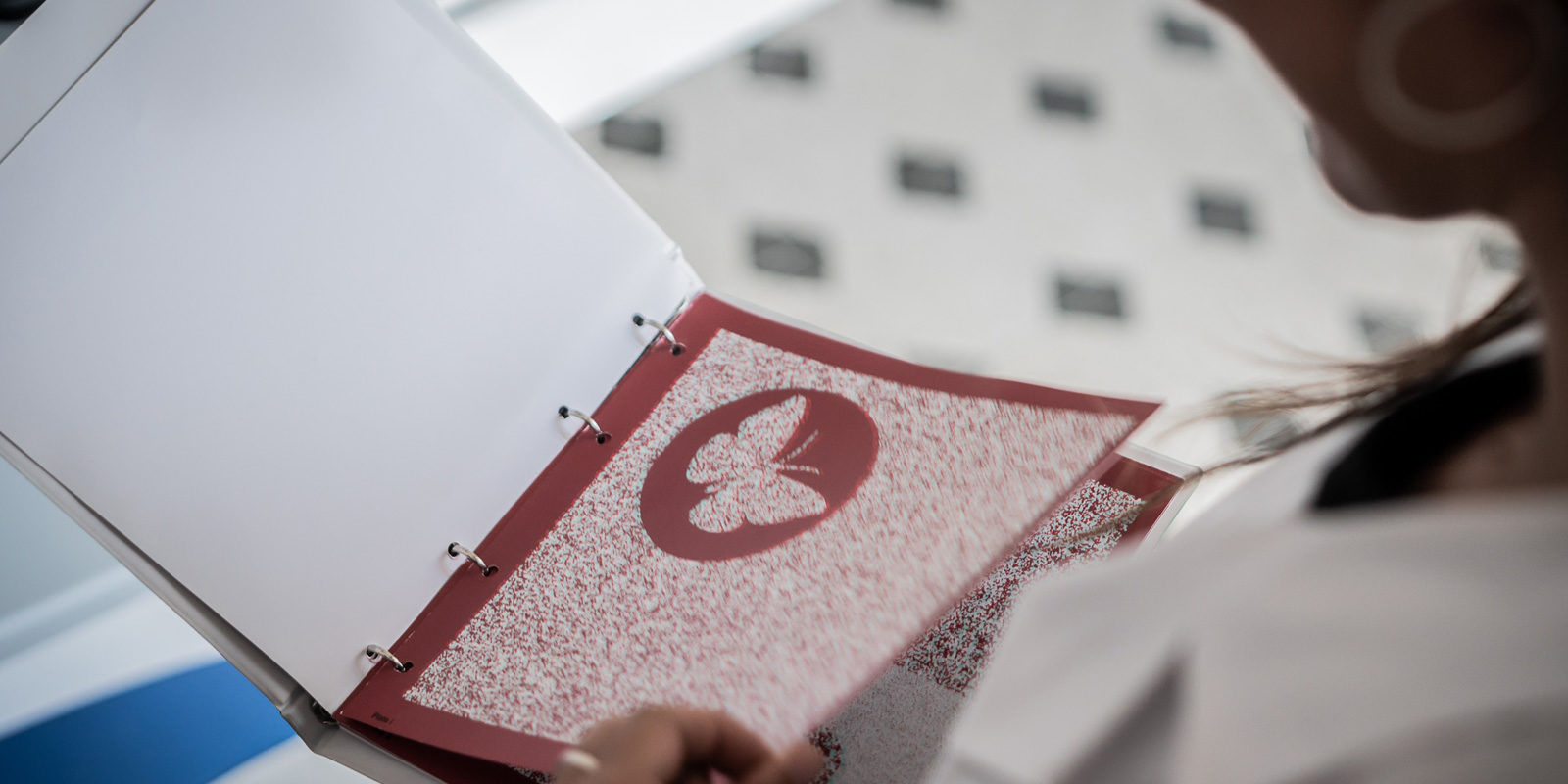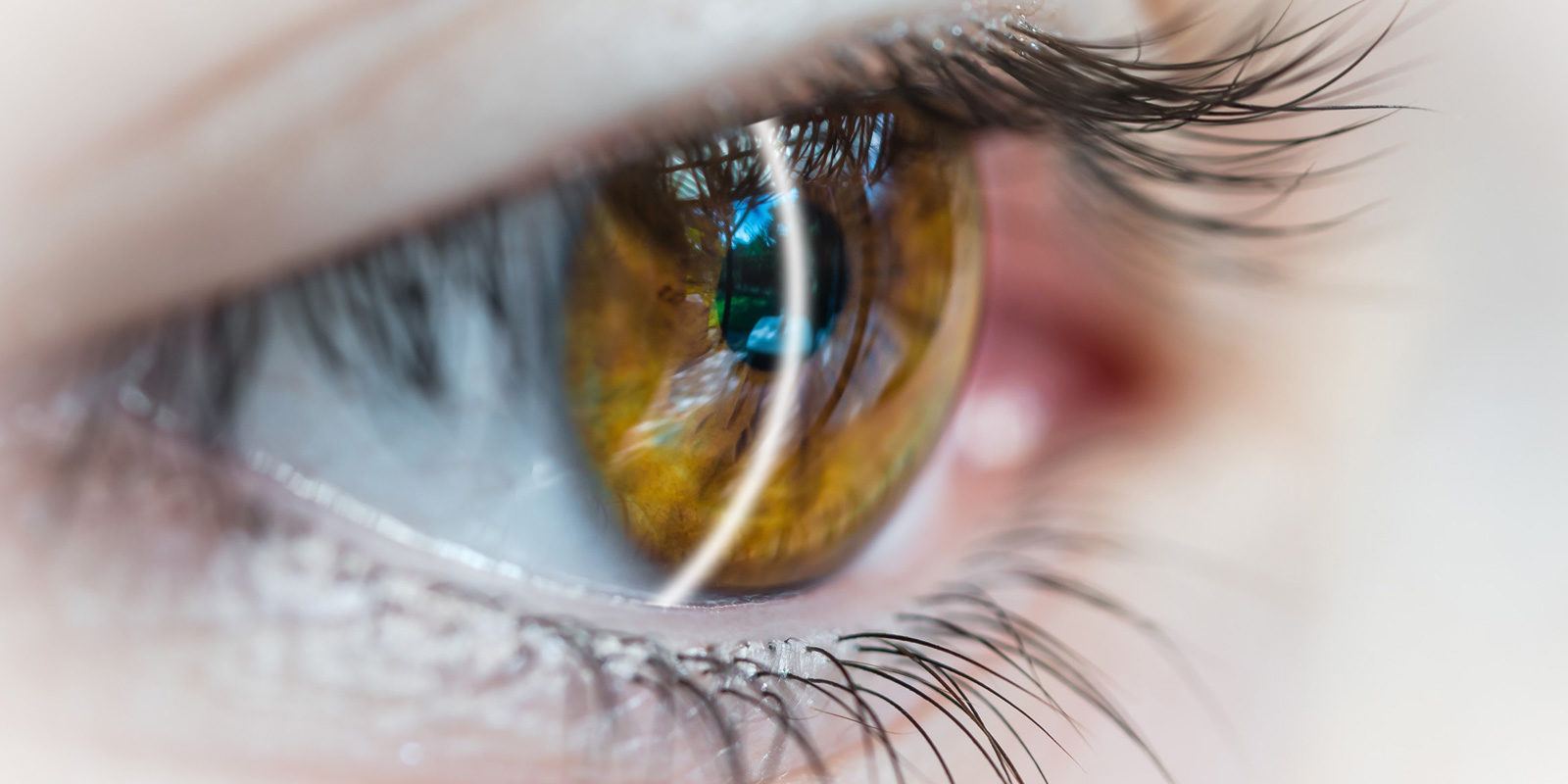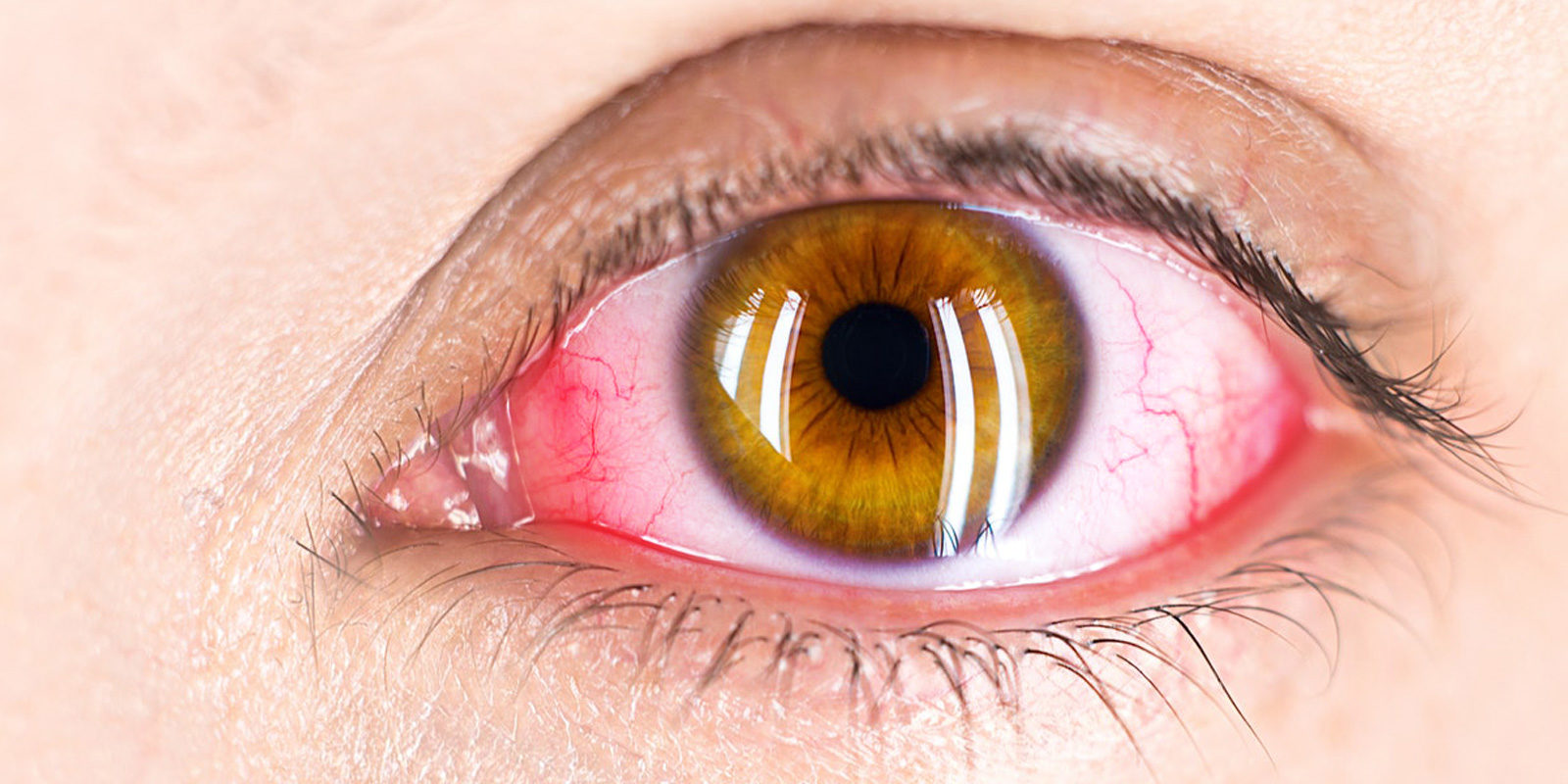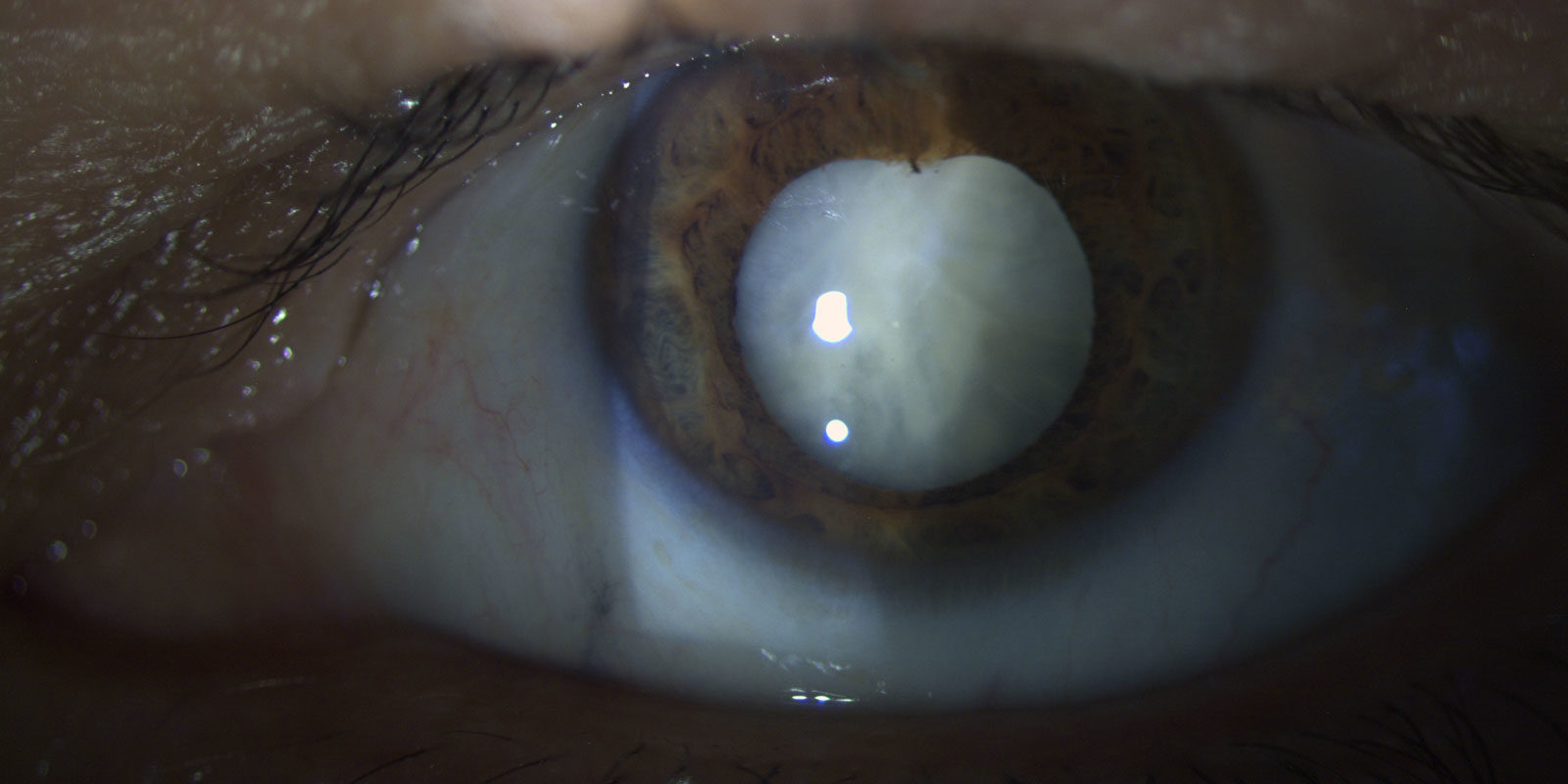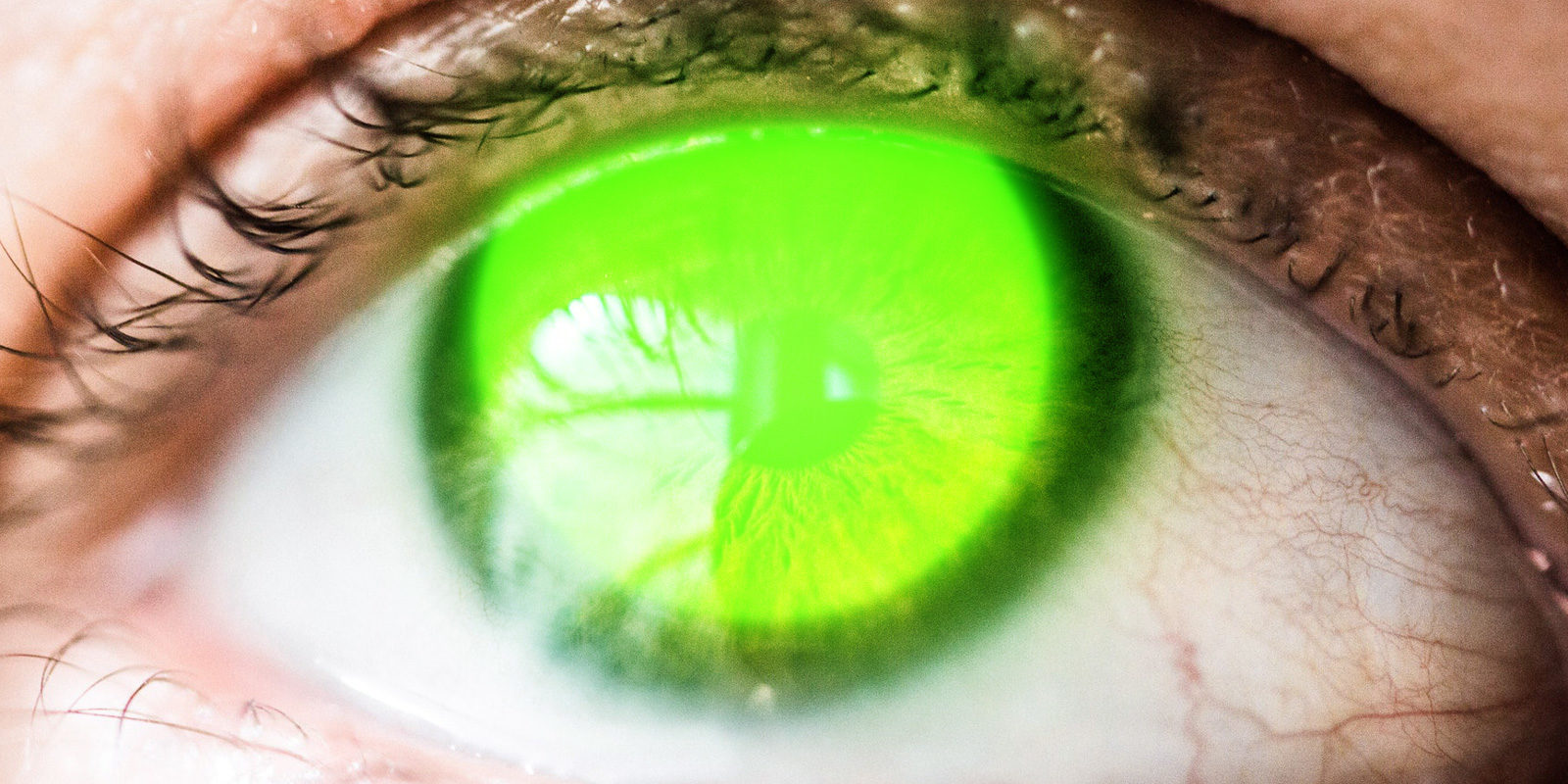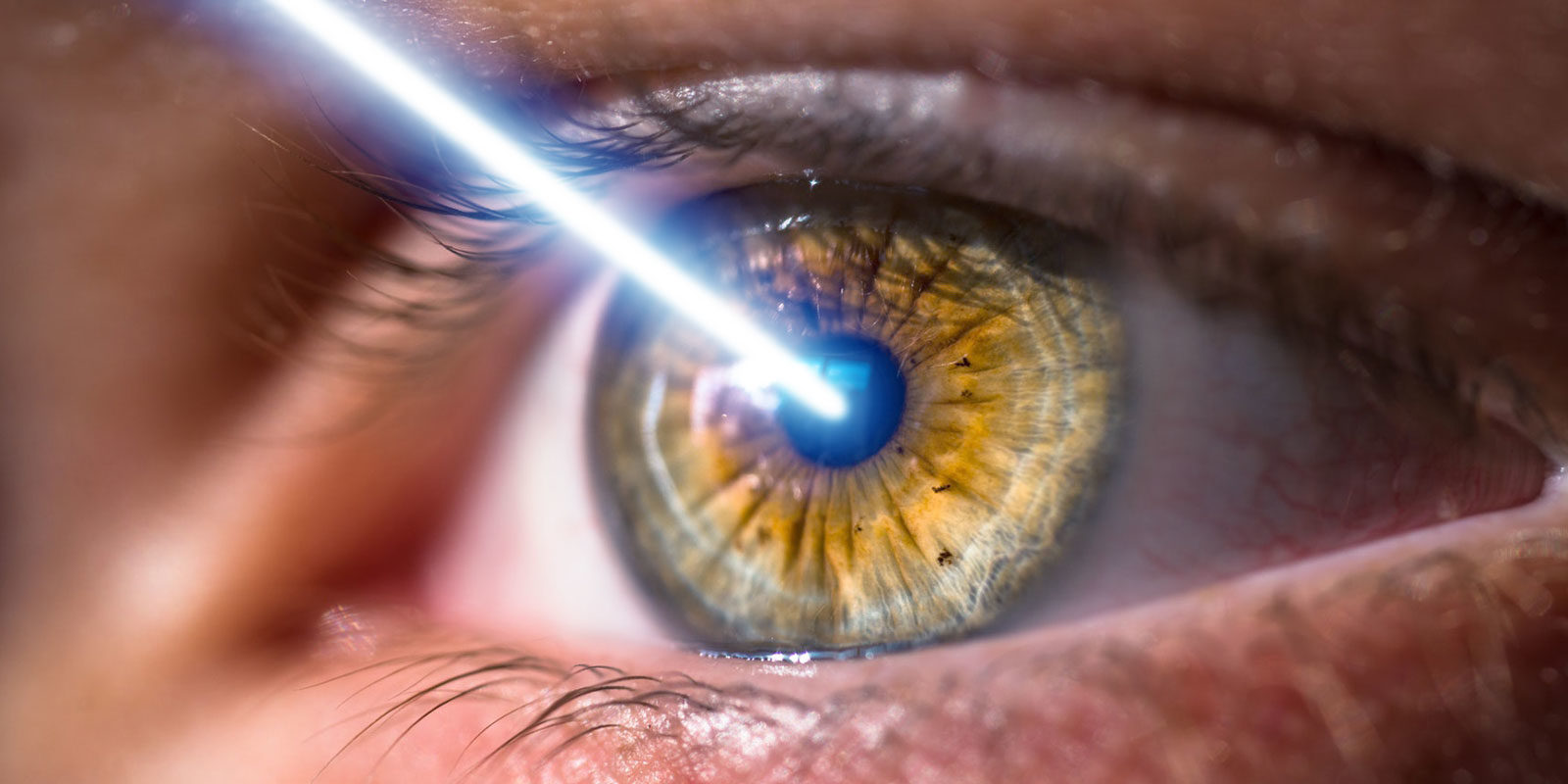

Simulated vision in the case of advanced glaucoma. The field of view narrows to a central slot.
Glaucoma
Dr. Marco Lombardo and his staff offer a professional service for diagnosis and treatment of glaucoma. The screening and diagnosis of glaucoma consists of an accurate eye examination and the execution of ocular tonometry, corneal pachymetry, computerized photographs and OCT of the optic nerve and computerized visual field.
The most appropriate care is proposed to each patient.
Intraocular pressure
Ocular pressure is maintained by the hydrodynamics of the aqueous humor. The aqueous humor is a transparent liquid, produced by the ciliary body, which flows between the posterior and the anterior chambers of the eye, being finally filtered through the chamber angle. The loss of balance between production and filtration of aqueous humor is responsible for ocular hypertension.
The normal values of ocular pressure are 16 ± 4 mmHg. Tonometric values above 22 mmHg must be carefully evaluated for increased risk of ocular hypertension.
What is Glaucoma
Glaucoma is a syndrome characterized by severe vision loss associated with optic nerve degeneration in the presence or not of high intraocular pressure. It occurs more frequently after 40 years old and is the second leading cause of legal blindness in the western world.
The first major risk factor of glaucoma is ocular hypertension; the risk increases with increasing eye pressure. Other risk factors include the genetic inheritance, the co-existence of vascular disorders such as diabetes and blood hypertension. Any prolonged use of topical corticosteroids also represent a significant risk factor for glaucoma.
A clear symptomatology is “absent” in most cases. Disease progression is subtle and insidious. The progressive damage of the optic nerve fibers induces a gradual deficiency of the visual field.
Diagnosis and therapy of glaucoma
The measurement of a high ocular pressure and a damaged optic disk are the diagnostic tests necessary to perform a correct diagnosis of glaucoma. The evaluation of the health of the optic nerve requires the visual field testing and OCT imaging.
The aim of glaucoma therapy is to reduce the ocular pressure. There are numerous drugs, which can be administered in eye drops, which are effective in reducing eye pressure. Since glaucoma is a chronic disease, it requires prolonged drug therapy.
Surgery becomes necessary only if the drug therapy is not able to lower the intraocular pressure or to avoid the progression of the optic nerve damage. Surgery has seen a flourishing of new techniques in recent years.
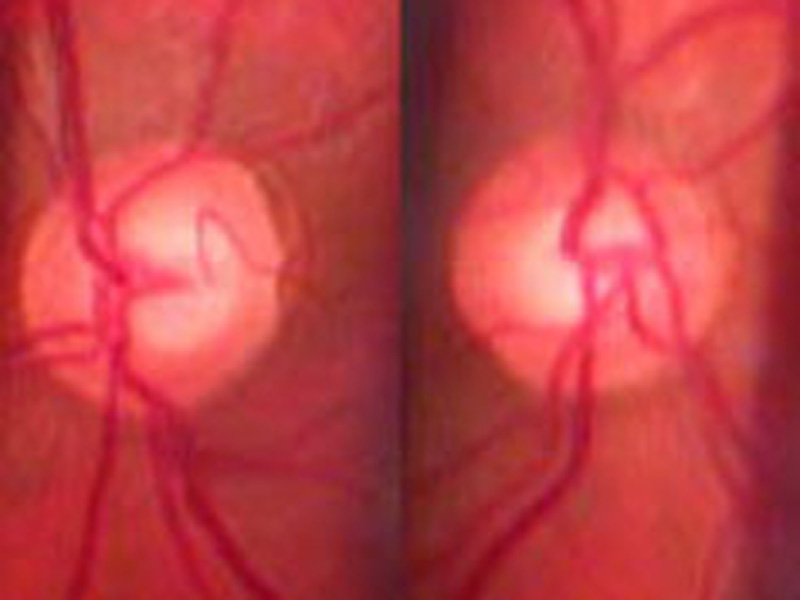
Optical glaucoma excavation. The field of view narrows to a central slot. The optic nerves appear very excavated.



